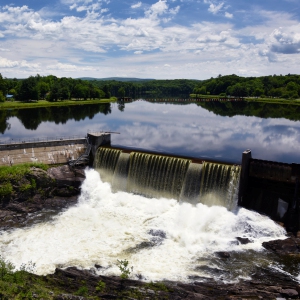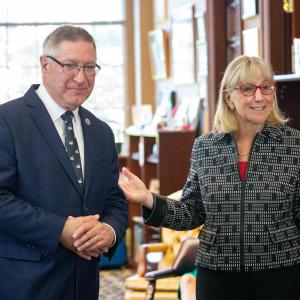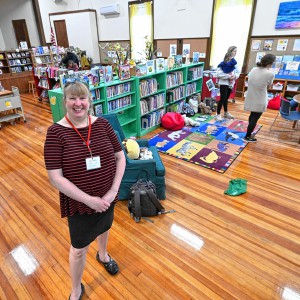UMass lands $1.1M EPA grant for home energy research
| Published: 08-20-2023 7:32 PM |
HOLYOKE — University of Massachusetts researchers have landed a $1.1M grant from the Environmental Protection Agency to research ways to help lower-income households and neighborhoods make the transition to a clean-energy future.
Residential buildings are a large part of a community’s greenhouse gas emissions, Krista Harper, the lead principal investigator said.
“That’s difficult to reduce. It requires millions of households to change,” she said. “We’re trying to find ways to do that more smoothly, more efficiently, and not just for those who can afford it.”
Harper and her team of 12 researchers and four co-investigators, in partnership with the community organization Neighbor to Neighbor, are set to officially launch the Holyoke Community Energy Project by meeting with Holyoke residents next month.
In fact, the team learned that it had been awarded the grant in January, Harper said, and researchers have already held a series of bilingual workshops with residents of low- and moderate-income households, focus groups where people talked about challenges and opportunities in changing the energy system.
Terry Gibson, project coordinator for Neighbor to Neighbor, said maybe 75 people came out to a recent workshop at El Mercado, community group Nueva Esperanza’s event hall, to talk about energy usage.
Going forward, he said they’re planning some events for smaller spaces, with 20 to 30 people.
Harper noted that UMass’ Energy Transition Institute has been a key partner in getting the groups together.
Article continues after...
Yesterday's Most Read Articles
“We believe that the only way to get a fast and fair transition to a net-zero energy system is to listen, especially to communities who have been ignored,” Erin Baker, faculty director of the Energy Transition Institute, said in a statement.
Harper is an anthropologist and the team includes academics from various disciplines, including urban planning, building construction technology and public health. She termed the project, “community-based participatory research.”
“It’s important for researchers to listen to the knowledge, experience of community members,” she said.
People are not generally motivated just by the idea of reducing their own home’s emissions, she suggested.
“We want to understand what are the benefits for people,” she said — perhaps improved air quality, or protection against power failures.
Massachusetts uses a lot of natural gas to power its electricity grid, Harper noted, but that mix is likely to change in the coming years. The Northeast also has a lot of older building stock, with low-efficiency electric and oil- and gas-powered heating systems that could be made more energy-efficient, and Holyoke is a great place to work on that change, she said. She called Holyoke a leader in clean energy and renewable energy investments, with its own municipal utility and projects such as the Massachusetts Green High Performance Computing Center.
“A lot of solutions are put forward at the level of single-family homes, but many folks aren’t owners — they live in multi-unit housing,” Harper said. “We have to think creatively about how to bring them into this energy transition.”
Solutions could include heat pumps, battery storage, at the household or community level, and induction cooktops, she said.
Part of the plan for the grant’s four-year span is to progress from the initial workshops to “science shops,” with participants thinking through technical problems, as well as conducting energy and air quality audits in people’s houses.
“Down the road we’ll have sessions with policymakers, planners, the mayor’s office,” Harper said.
At the same time, UMass and Neighbor to Neighbor are working together on a project to build a solar-powered community fridge at the Dwight Street Garden, a sort of pilot project that Gibson described as a pathway to the energy transition work involved in the research project.
“We needed a place to store vegetables,” he said. “Basically, we’re going to chop a shipping container in half.”
Half the space will be for storage, and half will be a walk-in fridge, he said. It should be completed by next fall.
Part of the research project’s mission is to understand the barriers to using clean power sources, but Harper said she doesn’t want to emphasize the barriers because they’re easy to find.
“What I think the EPA liked in our proposal was our plan to deeply integrate scientific, academic researchers with continual feedback loops, the exchange with community members,” she said.

 Valley lawmakers seek shorter license for FirstLight hydropower projects
Valley lawmakers seek shorter license for FirstLight hydropower projects State Senate budget funds free community college for all
State Senate budget funds free community college for all ‘We can just be who we are’: Thousands show support for LGBTQ community at Hampshire Pride
‘We can just be who we are’: Thousands show support for LGBTQ community at Hampshire Pride Doors open at Tilton Library’s temporary home at South Deerfield Congregational Church
Doors open at Tilton Library’s temporary home at South Deerfield Congregational Church
